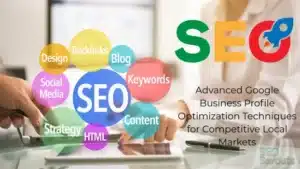
Search engines are at the core of any digital marketing strategy. Google dominates market share and SEO strategies often involve strategies for ranking with it.
Content provides answers people are searching for and is key in establishing relevance. It can take the form of text, videos, business listings or anything else relevant.
What is SEO?
Search engine optimization refers to making changes to a website that will increase its rank on search engines results pages (SERPs). While it involves many different tasks, its main elements include researching keywords, optimizing content creation processes, building links and ensuring the technical aspects of the site work efficiently.
This process seeks to produce content that responds directly to search queries, by writing articles that are helpful, informative, and accurate – as well as using relevant keywords sparingly across the page. Another key part of SEO involves keeping websites up-to-date as Google wants to see evidence that they remain active with up-to-date information.
There are a lot of misconceptions and myths surrounding SEO, but the key point to keep in mind is that SEO doesn’t mean “cheating” Google or finding creative ways to make your website rank higher; rather it involves understanding your target audience needs and creating content to meet them – over time your website’s rankings will improve and more people will visit.
Ranking higher in search engines means drawing visitors to your business or website that could become customers, clients or an engaged and loyal audience. While visitor counts can provide some indicator of this success, they’re certainly not the sole determinant.
Moz offers an excellent free guide that covers every aspect of SEO – from basic definitions of search engine optimization through more complex topics like keyword research and competitor analysis. It’s an invaluable resource for anyone interested in expanding their knowledge about how it can benefit their business growth. In addition, their Search Engine Optimization Superhero Visualizer lets you visualize all of the different factors affecting it in a diagram format.
Types of SEO
There is an array of services out there and it is essential that you become informed so you can select the ideal one for your business. There are four primary forms of services, on-page, off-page, local, and video.
On-page efforts refer to any action undertaken on a website to increase its rankings in search engines such as Google. This may involve using relevant keywords in titles, meta descriptions and headlines (H1); optimizing URLs so they’re more descriptive rather than just numbers; using schema markup to help search engines know exactly what content exists within; as well as making sure your site is mobile-friendly while featuring high quality, informative and pertinent content; among other techniques.
Off-Page SEO refers to all of the things that you do outside your website to increase its rankings in search engine results pages, such as link building and social media marketing. Effective SEO strategies employ all these techniques together.
Local SEO refers to optimizing your website and content so as to rank higher in search engine results pages for searches conducted by people within your locality, in order to attract more customers and sales.
Video SEO (search engine optimization) is the practice of optimizing videos and other forms of multimedia content to rank higher on search engine result pages, in order to increase traffic and leads. This strategy may help your business generate additional traffic and sales opportunities.
Paid search marketing (PSM) is a form of digital advertising in which advertisers pay to have their ads appear in search engine results pages. Paid search marketing works well when used alongside SEO; think of it as the opposite of free SEO, where ads pay to appear alongside organic results instead. However, PSM can be expensive so do your research carefully when choosing a provider and don’t be intimidated by company promises of guaranteed placements in SERPs alone; Moz has provided this guide if you need assistance getting started with PSM PSM to help navigate PPM with ease!
On-Page SEO vs. Off-Page SEO
On-page SEO refers to everything happening within the confines of your own website and includes elements like content optimization, meta tags, URL structure, internal linking, keyword usage density and site speed optimization. With on-page SEO within your control and an ideal starting point.
Off-page efforts involve building backlinks and external signals to boost your rankings, such as social media marketing, guest blogging or working with influencers. Its goal is to gain recognition and trust within your niche so that others will promote and recommend your content outside your website.
On-page SEO goes beyond keywords by taking into account user intent and crafting an enjoyable user experience on your website. This means providing useful, trustworthy information that addresses questions while adding value for readers; optimizing content for mobile devices as well as creating quality user experiences are both key aspects. In fact, Google recently included a “page experience signal” in its ranking algorithm that rewards websites offering a positive mobile user experience.
Search engines use complex and dynamic rules and algorithms that determine which pages appear in search engine result pages (SERPs) for various queries. Achieving top rankings requires an in-depth knowledge of these algorithms and their interactions, so keeping up with SEO trends and practices is absolutely vital to ensure top performance.
Though on-page and off-page SEO are both essential elements of an effective SEO strategy, on-page optimization tends to take priority due to more control over its components than off-page. Think of on-page as like filling a bathtub full of rubber duckies while off-page works by flooding them out; optimizing on-page content increases its rankings; building authority in search engines takes time but once established can prove extremely effective at increasing rankings and driving traffic to your website.
Core Elements of SEO
This encompasses many different elements, but every strategy should include three key tenets. These elements are keyword research, technical optimizations and off-page optimizations. If these components are in place it will allow you to craft and implement an effective plan that drives traffic, improves user experience and achieves business goals.
Search engines exist to provide their users, or “searchers,” with the best possible search results. As such, they are constantly evolving and refining how they surface pages in response to search queries. In earlier days of SEO, webmasters would attempt to artificially influence search engine rankings by stuffing pages with numerous keywords; eventually leading to changes in algorithms to combat such abuses.
With time, webmasters realized the importance of creating quality content as part of an SEO strategy. Therefore, they began developing valuable and useful posts that addressed the needs of their target audiences to build strong online reputations and establish more authority with search engines.
Quality content remains one of the cornerstones of successful SEO; however, other considerations must be taken when developing and optimizing this type of material.
Title tags are essential components of on-page SEO as search engines and users see them when viewing a webpage in search results. Your title tag should accurately depict your page content while including your primary keyword; however, overuse of keywords could result in keyword cannibalization – where pages compete against each other for search rankings by targeting similar terms.
Internal link structure, image alt text, meta descriptions and schema markup are among other on-page SEO elements that comprise effective on-page optimization for websites that sell products; while Ecommerce SEO involves additional elements like faceted navigation, category pages, product images and review markup – as well as international SEO which requires specific knowledge about how different search engines operate internationally.





